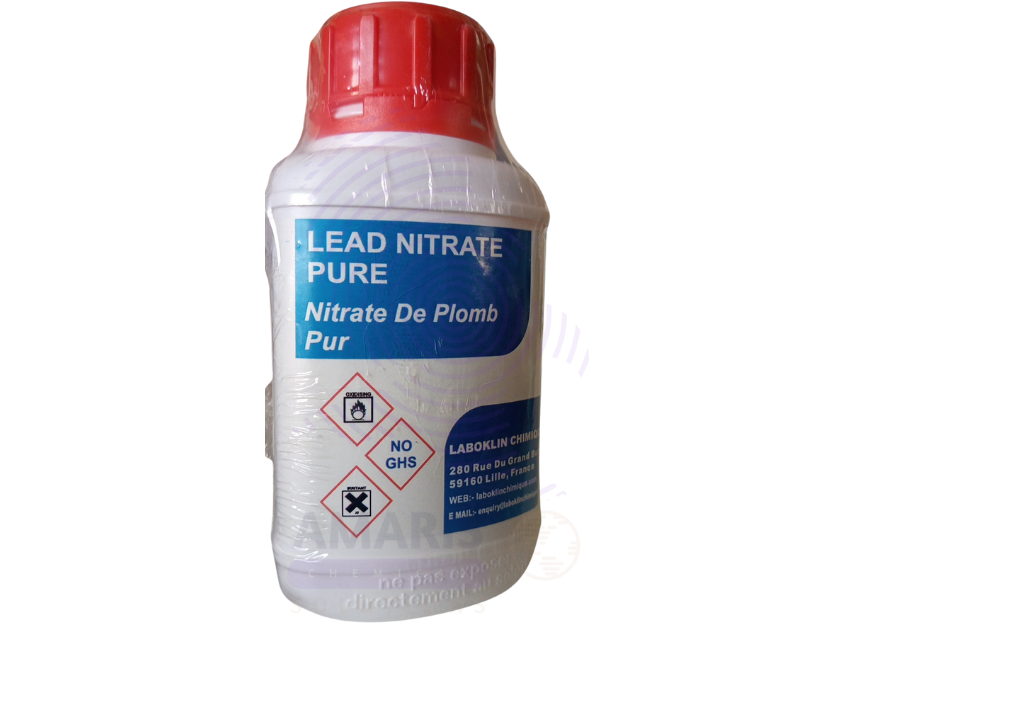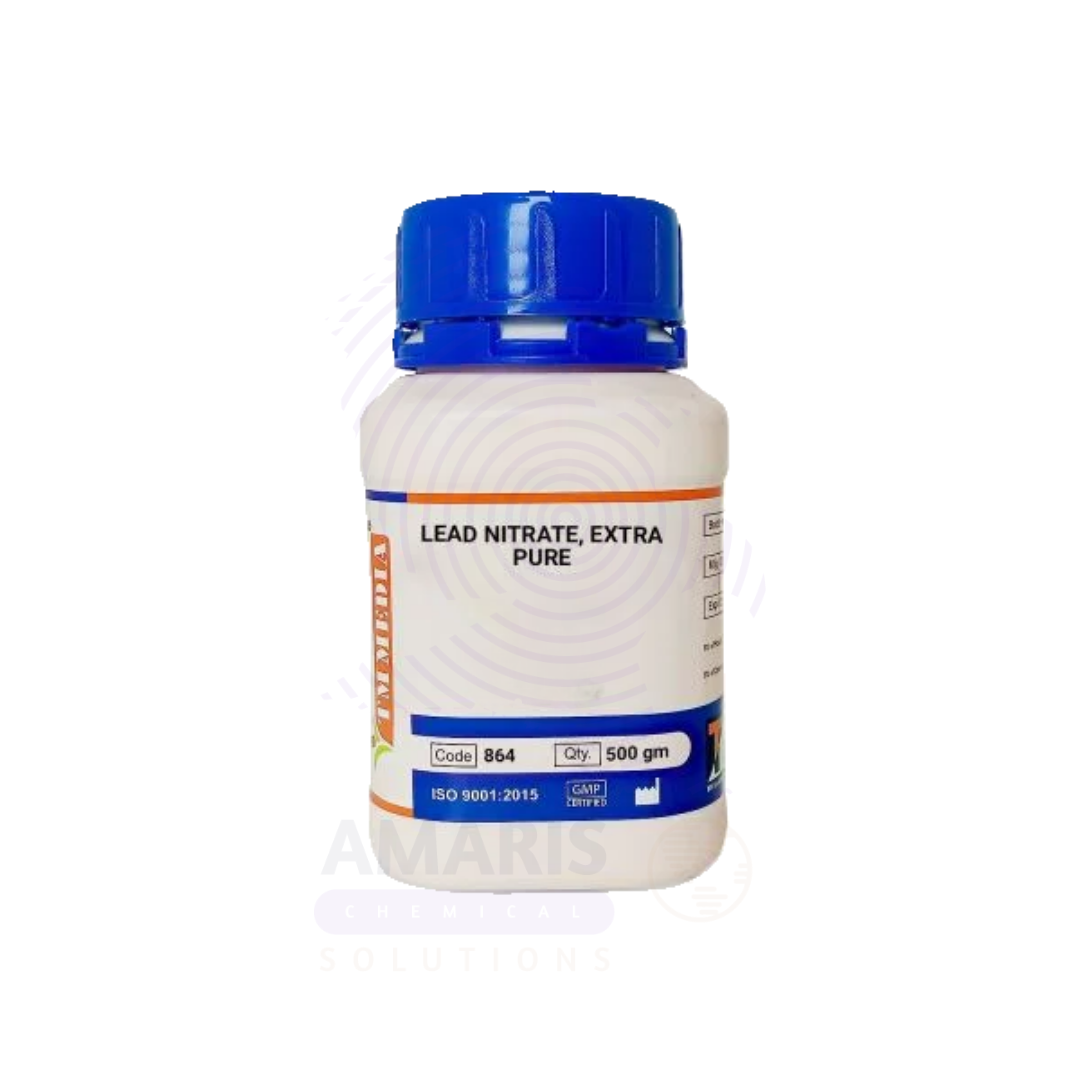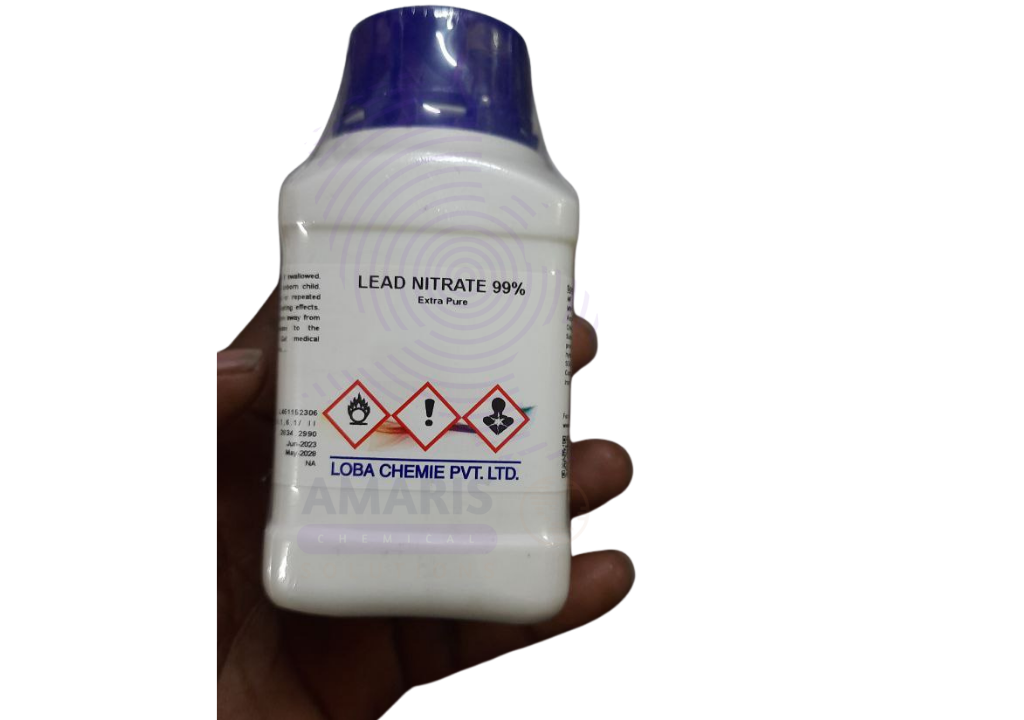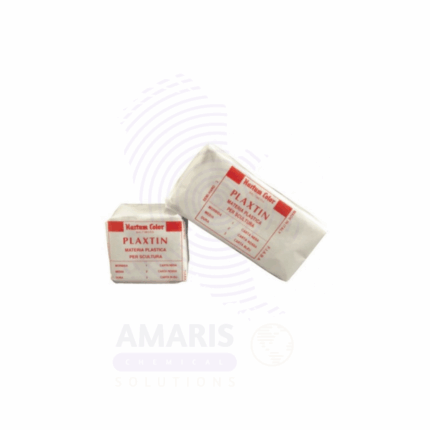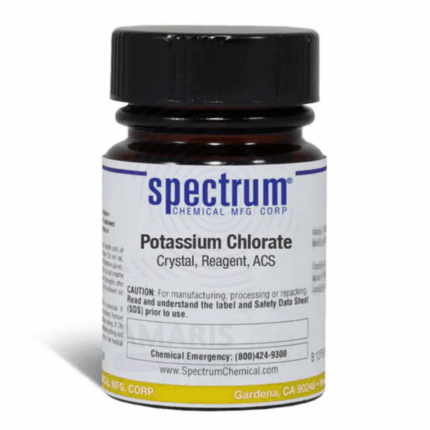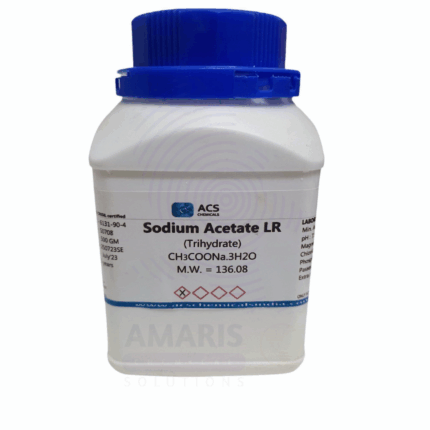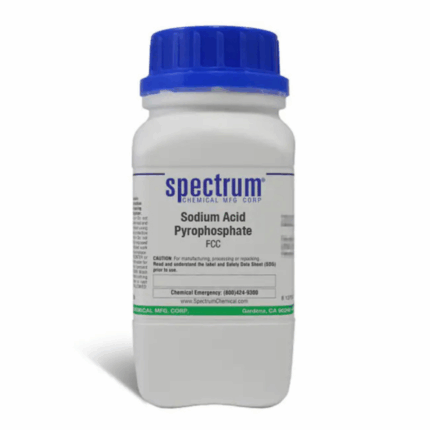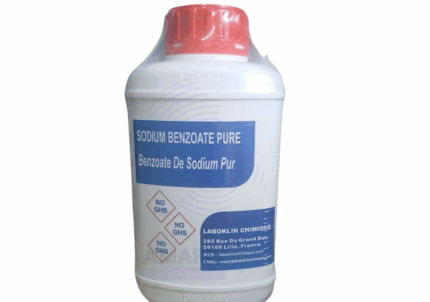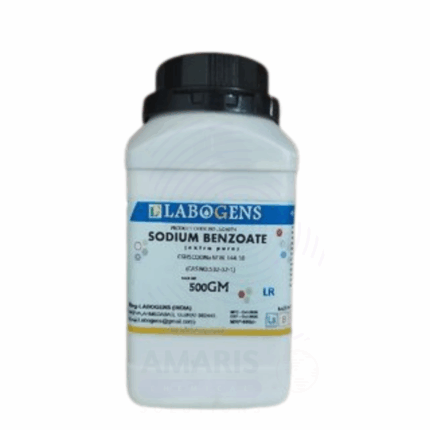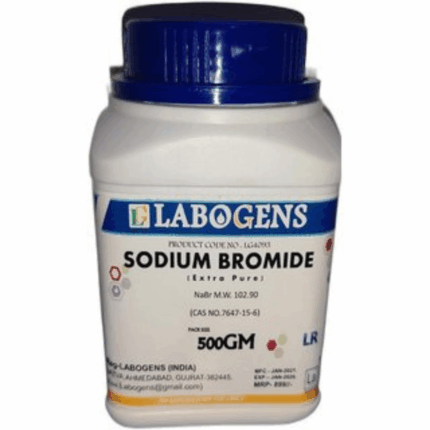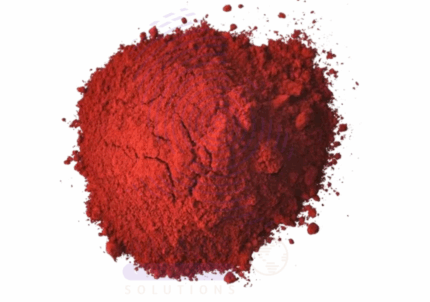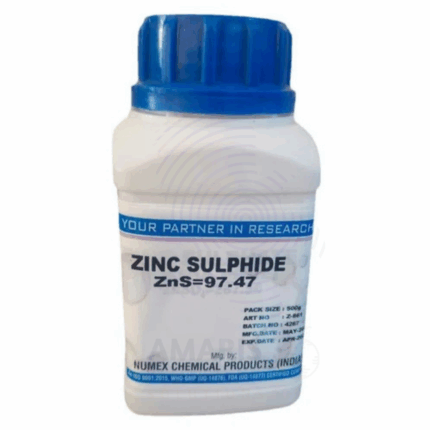
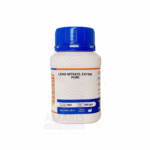

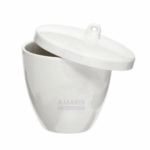
Lead Nitrate Extra Pure
$ 17.98 Original price was: $ 17.98.$ 17.86Current price is: $ 17.86.
Lead Nitrate Extra Pure is a white crystalline compound (Pb(NO₃)₂) known for its excellent solubility in water and reliable reactivity, making it a key reagent in analytical and industrial chemistry. It is frequently used in laboratory synthesis, qualitative analysis, and in the production of other lead compounds. In pyrotechnics, it’s valued for its role as an oxidizing agent, while in metallurgy, it assists in gold leaching and ore processing. Its high purity ensures consistent performance in controlled experiments and manufacturing. Due to its toxic and oxidizing nature, it must be handled with careful PPE protocols and stored securely away from organics or combustible materials.
Lead Nitrate Extra Pure
Primary Uses
- Oxidizing Agent in Synthesis:
- Widely used as a strong oxidizer in various inorganic reactions, especially for preparing lead-based compounds.
- Precursor to Other Lead Salts:
- Serves as a starting material in the preparation of other lead compounds like lead chromate, lead carbonate, and lead azide.
- Analytical Chemistry:
- Employed in qualitative analysis and precipitation reactions, particularly to test for halide ions and other anions.
Secondary Uses
- Heat Decomposition Studies:
- Studied in decomposition reactions to understand thermal breakdown into lead oxide, nitrogen dioxide, and oxygen.
- Explosive and Pyrotechnic Research:
- Occasionally used in research settings for pyrotechnic formulations or the synthesis of lead azide, a detonating agent.
- Crystal Growth Experiments:
- Used to grow lead nitrate crystals in controlled crystallography or solubility studies.
- Used to grow lead nitrate crystals in controlled crystallography or solubility studies.
| PACK SIZE |
250 grams Plastic Tin |
|---|
1. Basic Identification Attributes
- Chemical Name: Lead(II) Nitrate
- Synonyms: Plumbous nitrate
- Chemical Formula: Pb(NO₃)₂
- CAS Number: 10099-74-8
- Molecular Weight: 331.2 g/mol
- Grade: Extra Pure (analytical/laboratory use)
- Appearance: White crystalline solid
- Odor: Odorless
- Solubility: Soluble in water, slightly soluble in alcohol
- Melting Point: 470 °C (decomposes)
2. Safety & Hazard Attributes
- GHS Classification:
- Oxidizing solids – Category 2
- Acute toxicity (oral) – Category 4
- Reproductive toxicity – Category 1A
- Specific target organ toxicity – Repeated exposure, Category 2
- Aquatic chronic toxicity – Category 1
- Hazard Statements:
- H272: May intensify fire; oxidizer
- H302: Harmful if swallowed
- H360: May damage fertility or the unborn child
- H373: May cause damage to organs through prolonged or repeated exposure
- H410: Very toxic to aquatic life with long lasting effects
- Precautionary Statements:
- P210: Keep away from heat/sparks/open flames
- P220: Keep away from combustible materials
- P280: Wear protective gloves/clothing/eye protection
- P301+P312: IF SWALLOWED: Call a POISON CENTER
- P273: Avoid release to the environment
- Personal Protective Equipment (PPE):
- Safety goggles
- Chemical-resistant gloves
- Lab coat
- Use in fume hood
- First Aid Measures:
- Inhalation: Move to fresh air; seek medical advice
- Skin Contact: Wash with soap and water
- Eye Contact: Rinse thoroughly with water for several minutes
- Ingestion: Rinse mouth and seek medical attention; do not induce vomiting
- Fire Hazards:
- Strong oxidizer – enhances combustion of flammable materials
- Decomposes on heating to emit toxic lead oxides and nitrogen oxides
- Use water spray, dry chemical, or foam
3. Storage & Handling Attributes
- Storage Conditions:
- Store in a cool, dry, well-ventilated area
- Keep container tightly sealed
- Keep away from organic materials, reducing agents, and heat sources
- Handling Tips:
- Minimize dust generation
- Avoid contact with combustible materials
- Handle under a fume hood
- Wash thoroughly after handling
4. Laboratory Applications
- Primary Uses:
- Source of lead ions in analytical chemistry
- Reagent in qualitative inorganic analysis
- Oxidizing agent in laboratory synthesis
- Secondary Uses:
- Used in pyrotechnics for colored flames (educational demos only)
- Demonstration of double displacement and precipitation reactions
- Preparation of other lead compounds for controlled laboratory studies
SAFETY PRECAUTIONS
Personal Protective Equipment (PPE):
- Wear a lab coat, chemical‑resistant gloves (nitrile or neoprene), and chemical splash goggles.
- Use a NIOSH‑approved particulate respirator or work in a fume hood to avoid inhaling dust.
Handling:
- Handle with extreme caution—toxic and a strong oxidizer.
- Avoid generating or breathing dust; prevent all contact with skin, eyes, and clothing.
- Keep away from combustible/organic materials, reducing agents, and acids.
- Do not eat, drink, or smoke when using this product. Wash hands thoroughly after handling.
Storage:
- Store tightly closed in a cool, dry, well‑ventilated area.
- Segregate from fuels, organics, powdered metals, sulfur, and other incompatibles.
- Clearly label as TOXIC / OXIDIZER and restrict access.
FIRST AID MEASURES
Inhalation:
- Move person to fresh air immediately.
- If symptoms (cough, shortness of breath) occur, seek urgent medical attention; provide oxygen if needed.
Skin Contact:
- Remove contaminated clothing.
- Wash skin with soap and plenty of water for at least 15 minutes.
- Get medical advice if irritation or systemic symptoms occur.
Eye Contact:
- Rinse cautiously with water for ≥15 minutes while holding eyelids apart.
- Remove contact lenses if easy to do. Seek immediate medical attention.
Ingestion:
- Do NOT induce vomiting. Rinse mouth with water.
- Seek immediate medical attention—lead compounds are highly toxic.
FIRE FIGHTING MEASURES
Flammability:
- Not combustible, but oxidizer—can intensify fire and cause combustible materials to ignite.
Extinguishing Media:
- Water spray/fog is preferred for materials involved in fire and for cooling containers.
- Use dry chemical or CO₂ only for surrounding materials; do not use smothering agents on the oxidizer itself.
Hazardous Combustion Products:
- Lead oxides and nitrogen oxides (NOₓ); toxic metal fumes.
Firefighter Protection:
- Wear self‑contained breathing apparatus (SCBA) and full protective gear.
- Avoid inhalation of fumes; prevent contaminated runoff from entering waterways.


 Preservatives(food)
Preservatives(food) Flavor Enhancers
Flavor Enhancers Acidulants
Acidulants Sweeteners
Sweeteners Antioxidants
Antioxidants Colorants(food)
Colorants(food) Nutraceutical Ingredients (food)
Nutraceutical Ingredients (food) Nutrient Supplements
Nutrient Supplements Emulsifiers
Emulsifiers
 Collectors
Collectors Dust Suppressants
Dust Suppressants Explosives and Blasting Agents
Explosives and Blasting Agents Flocculants and Coagulants
Flocculants and Coagulants Frothers
Frothers Leaching Agents
Leaching Agents pH Modifiers
pH Modifiers Precious Metal Extraction Agents
Precious Metal Extraction Agents
 Antioxidants(plastic)
Antioxidants(plastic) Colorants (Pigments, Dyes)
Colorants (Pigments, Dyes) Fillers and Reinforcements
Fillers and Reinforcements Flame Retardants
Flame Retardants Monomers
Monomers Plasticizers
Plasticizers Polymerization Initiators
Polymerization Initiators Stabilizers (UV, Heat)
Stabilizers (UV, Heat)
 Antifoaming Agents
Antifoaming Agents Chelating Agents
Chelating Agents Coagulants and Flocculants
Coagulants and Flocculants Corrosion Inhibitors
Corrosion Inhibitors Disinfectants and Biocides
Disinfectants and Biocides Oxidizing Agents
Oxidizing Agents pH Adjusters
pH Adjusters Scale Inhibitors( water)
Scale Inhibitors( water)
 Antioxidants(cosmetic)
Antioxidants(cosmetic) Emollients
Emollients Fragrances and Essential Oils
Fragrances and Essential Oils Humectants
Humectants Preservatives
Preservatives Surfactants(cosmetic)
Surfactants(cosmetic) Thickeners
Thickeners UV Filters
UV Filters
 Fertilizers
Fertilizers Soil Conditioners
Soil Conditioners Plant Growth Regulators
Plant Growth Regulators Animal Feed Additives
Animal Feed Additives Biostimulants
Biostimulants Pesticides (Herbicides, Insecticides, Fungicides)
Pesticides (Herbicides, Insecticides, Fungicides)
 Active Pharmaceutical Ingredients (APIs)
Active Pharmaceutical Ingredients (APIs) Excipients
Excipients Solvents(pharmaceutical)
Solvents(pharmaceutical) Antibiotics
Antibiotics Antiseptics and Disinfectants
Antiseptics and Disinfectants Vaccine Adjuvants
Vaccine Adjuvants Nutraceutical Ingredients (pharmaceutical)
Nutraceutical Ingredients (pharmaceutical) Analgesics & Antipyretics
Analgesics & Antipyretics
 Analytical Reagents
Analytical Reagents Solvents(lab)
Solvents(lab) Chromatography Chemicals
Chromatography Chemicals Spectroscopy Reagents
Spectroscopy Reagents microbiology-and-cell-culture-reagents
microbiology-and-cell-culture-reagents Molecular Biology Reagents
Molecular Biology Reagents Biochemical Reagents
Biochemical Reagents Inorganic and Organic Standards
Inorganic and Organic Standards Laboratory Safety Chemicals
Laboratory Safety Chemicals Specialty Laboratory Chemicals(Special Laboratory Equipment)
Specialty Laboratory Chemicals(Special Laboratory Equipment)
 Demulsifiers
Demulsifiers Hydraulic Fracturing Fluids
Hydraulic Fracturing Fluids Scale Inhibitors(oil)
Scale Inhibitors(oil) Surfactants(oil)
Surfactants(oil) Drilling Fluids
Drilling Fluids
 Dyes and Pigments
Dyes and Pigments Bleaching Agents
Bleaching Agents Softening Agents
Softening Agents Finishing Agents
Finishing Agents Antistatic Agents
Antistatic Agents
 Admixtures
Admixtures Waterproofing Agents
Waterproofing Agents Sealants and Adhesives
Sealants and Adhesives Curing Compounds
Curing Compounds Concrete Repair Chemicals
Concrete Repair Chemicals Anti-Corrosion Coatings
Anti-Corrosion Coatings
 Surfactants(cleaning)
Surfactants(cleaning) Builders
Builders Enzymes
Enzymes Solvents (Cleaning)
Solvents (Cleaning) Fragrances
Fragrances
 Electronic Chemicals
Electronic Chemicals Catalysts
Catalysts Lubricants
Lubricants Photographic Chemicals
Photographic Chemicals Refrigerants
Refrigerants Automotive chemicals
Automotive chemicals Pyrotechnic Chemicals
Pyrotechnic Chemicals
 Biodegradable Surfactants
Biodegradable Surfactants Bio-based Solvents
Bio-based Solvents Renewable Polymers
Renewable Polymers Carbon Capture Chemicals
Carbon Capture Chemicals Wastewater Treatment Chemicals
Wastewater Treatment Chemicals
 Pigments
Pigments Solvents(paint)
Solvents(paint) Specialty Coatings
Specialty Coatings Binders/Resins
Binders/Resins Additives
Additives Driers
Driers Anti-Corrosion Agents
Anti-Corrosion Agents Functional Coatings
Functional Coatings Application-Specific Coatings
Application-Specific Coatings
 Fresh Herbs
Fresh Herbs Ground Spices
Ground Spices Whole Spices
Whole Spices Spice Blends
Spice Blends Dried Herbs
Dried Herbs
 Leavening Agents
Leavening Agents Dough Conditioners
Dough Conditioners Flour Treatments
Flour Treatments Fat Replacers
Fat Replacers Decoratives
Decoratives Preservatives(baking)
Preservatives(baking)
 Plasticizers & Softeners
Plasticizers & Softeners Reinforcing Agents
Reinforcing Agents Adhesion Promoters
Adhesion Promoters Vulcanizing Agents
Vulcanizing Agents Antidegradants
Antidegradants Blowing Agents
Blowing Agents Fillers & Extenders
Fillers & Extenders Accelerators & Retarders
Accelerators & Retarders